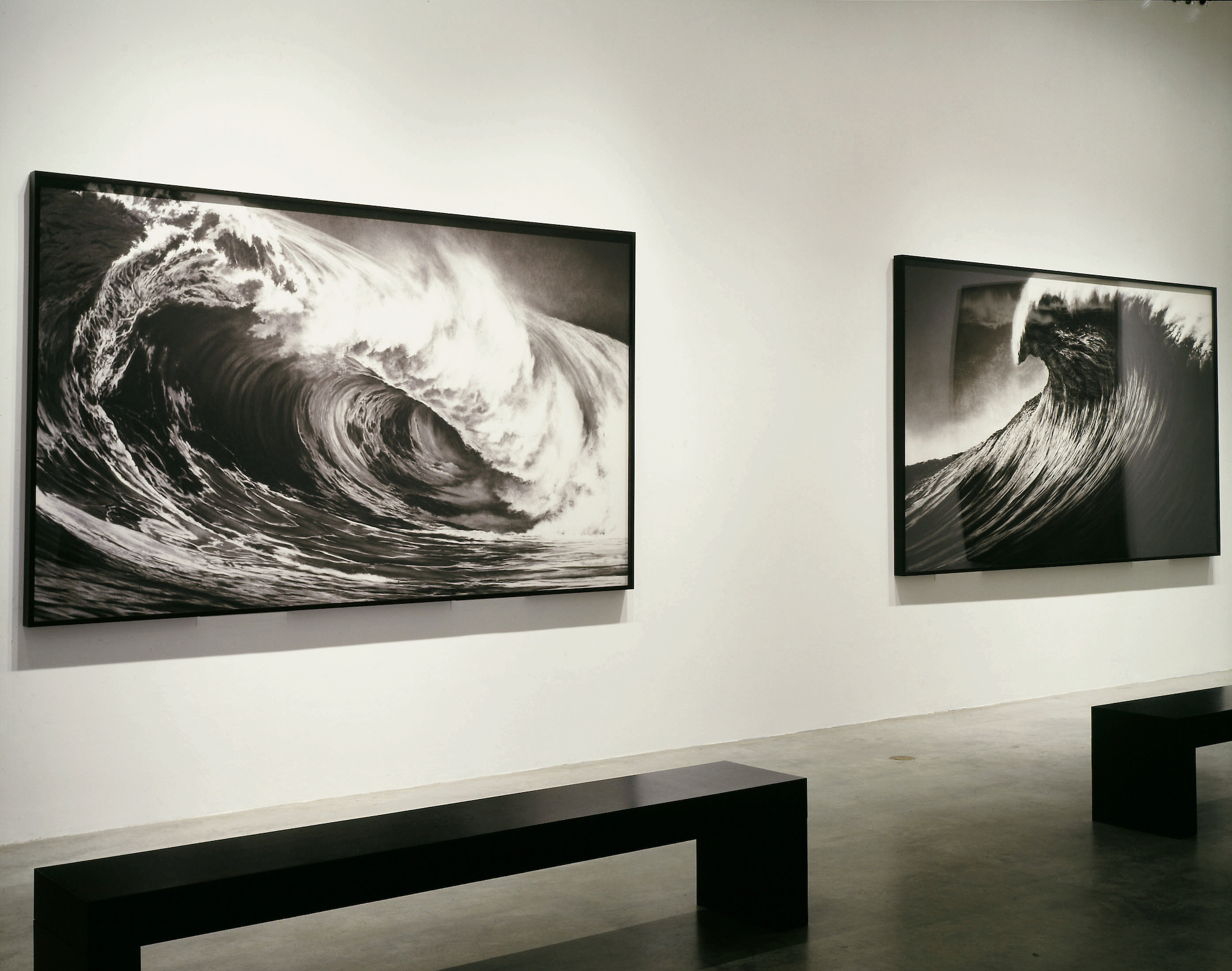For those of us on the East Coast, the last dregs of summer bring the big waves generated by hurricanes born in the south Atlantic. The unrelenting shorebreak drags posh beachfront real estate and frolicking beachgoers right out to sea without prejudice. This is the best time of year for East Coast surfers. It certainly is for me. But this summer, the biggest waves I’ve seen are on paper in Robert Longo’s studio.
Early in 2001, Longo had a show at Metro of his charcoal drawings of Sigmund Freud’s house in Germany before the Nazis kicked him out in 1938. The drawings were big and somber and unspectacular. We looked at them and were nonplussed because Americans are over Freud for now. I know I didn’t feel Freudian. The New York Times critic Ken Johnson gave Longo a few catty flicks. Donald Kuspit in Artforum was the only American critic intrigued enough to see that the Freud drawings were a warning of yet another attack of intellectual fascism. Despite the quiet reception here, the drawings were a big hit in Europe and were all sold.
Robert Longo first hit the big time in the 1980s. He had a big 80s pompadour and lots of black clothes and, if I remember, big black boots. It’s hard to forget an image like that. In 1981, he exhibited a set of spectacular black-and-white drawings that he titled “Men in Cities.” Big hit. In 1983, he showed “Corporate Wars.” A bigger hit. Longo’s well-dressed figures flailed in skinny neckties and arty new-wave abandon.

Longo worked with industrial precision on a massive scale. He employed dozens of assistants and models. He had five shows in the 80s at Metro, along with a string of exhibitions in the U.S. and Europe. In one show at the University of Texas, the football team was enlisted to hang Longo’s works. Success brought fame, money, women, rock-and-roll videos (for bands like New Order, REM, and Helmet), drugs, media hype, egomania, etc.
By the end of the 80s, a sea change sent New York art stars like Julian Schnabel, David Salle, and Robert Longo running for cover after the art media started pelting them with rotting tomatoes. The art world’s love affair with Longo, in particular, soured in the late 80s with his exhibition, “All You Zombies,” a particularly aggressive batch of works. He was quoted in glossy magazines making comments that bordered on the Napoleonic. His popularity went south.
Longo started the 1990s by moving to Paris and a more forgiving Europe. The old world embraced Longo’s art, and he met his future wife, film star Barbara Sukowa. By the mid 90s, he was married with children, living in Brooklyn, and working out of his Manhattan loft again. He was humbled, sober, and grateful. If I weren’t the one saying this, I would choke a bit, too.

His Manhattan studio is humongous—must be 5,000 square feet with 18-foot ceilings on the top floor of a nice semi Chinatown building he has been in since the 80s. A complicated interior—a classic SoHo custom-made kitchen and an entry wallpapered with art mementos. The décor overall is kind of a mix of road warrior meets teen serial killer, hard-core skulls with Mohawks, studies for past sculptures, surfboard blanks, posters of Yukio Mishima, and of Keanu Reeves for Longo’s 1995 movie Johnny Mnenomic; hundreds of snapshots, all the stuffed and mounted history of a big-game hunter.
That opens into a white cube clearing. The studio is as large as half a basketball court and, in fact, has a well-used, not-quite regulation hoop. Looked a bit low (he said it got spiked down). He also said the loft was only half as big as it used to be. You can tell a lot about artists by seeing their studios.


At my visit, the studio walls were lined with wave drawings. Big wave drawings—six-feet high and 10-feet long. Charcoal on paper mounted on plexi and stretcher bars. Little studies of waves covered with smudgy fingerprints. Even miniature wave paintings mounted on the walls of a miniature model of the Metro Pictures gallery space, along with another model of a German museum the Freud drawings are going to.
The white studio is covered in fine black silt. Longo is covered in fine black silt. Other than that, he looks like a normal artist.

The wave drawings are hot. Sexy. Environmental. They have a lyrical ferocity in shape and a classic scale closer to Renaissance cartoons before the glazing process. The cool detachment of his previous output isn’t here. The professionalism persists. The spectacle is burnished to a gritty realism. Not that the waves are real, per se, because they are composite hybrids very much influenced by the waves he’s looked at on the beach at Fire Island along with famous breaks from surf magazines. He doesn’t have a platoon of assistants now, only one guy who does whatever assistants do. This is wild nature, inside the artist, and way outside anything human. It’s old-fashioned image wrangling pretty much the way it’s always been (at least since the first projection device). The artist is all there, buried deep in the blue.
If you didn’t know who Longo was before, the new work would compel you to find out who he is now. For those of you who did, I won’t posit anything other than to say Robert Longo isn’t a fluke; he’s a New York artist.










